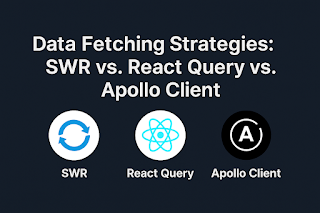Web Accessibility (A11Y) & Inclusive Design Principles: Designing for Everyone
In today’s digital-first world, ensuring that everyone—including people with disabilities—can access and interact with websites and applications is not just a legal or ethical obligation, but also a smart business decision. That’s where Web Accessibility (A11Y) and Inclusive Design Principles come into play.
What is Web Accessibility (A11Y)?
Web Accessibility, often abbreviated as A11Y (with 11 letters between A and Y), refers to the design and development of websites, tools, and technologies that are usable by people of all abilities. This includes:
- Individuals with visual, auditory, motor, and cognitive disabilities.
- Older users with changing abilities due to aging.
- Users in temporary or situational contexts (e.g., a broken arm or bright sunlight).
Accessible design helps everyone.
Why Accessibility Matters
- Over 1 billion people globally live with some form of disability.
- It improves SEO, mobile responsiveness, and user experience for all.
- In many regions, accessibility is required by law (e.g., ADA, WCAG, Section 508).
- Inclusive platforms reach wider audiences, boosting engagement and retention.
Inclusive Design vs. Accessible Design
Though often used interchangeably, they differ:
- Accessible Design focuses on removing barriers for people with disabilities.
- Inclusive Design is broader—it ensures all people, regardless of background or ability, can interact with a product meaningfully.
Inclusive Design = Proactive Accessibility.
Core Principles of Inclusive Design
- Equitable Use: Everyone should be able to use the product the same way.
- Flexibility in Use: Accommodate a wide range of preferences and abilities.
- Simple & Intuitive: Make interfaces easy to understand, regardless of user experience.
- Perceptible Information: Present content in multiple ways (text, visuals, audio).
- Tolerance for Error: Reduce hazards and minimize consequences of mistakes.
- Low Physical Effort: Minimize actions and inputs required.
- Size & Space for Approach: Ensure content is easily navigable and reachable.
Key Accessibility Practices to Follow
- Use semantic HTML (<header>, <nav>, <main>, etc.)
- Ensure color contrast meets WCAG standards.
- Add alt text to all images.
- Use ARIA labels and roles for screen reader support.
- Enable keyboard navigation.
- Avoid auto-playing audio/video.
- Provide transcripts and captions for media content.
- Make interactive elements (buttons, links, forms) focusable and screen-reader friendly.
Tools & Resources
- WAVE (Web Accessibility Evaluation Tool)
- axe DevTools
- Lighthouse in Chrome DevTools
- WCAG 2.1 Guidelines
- Screen Readers: NVDA, JAWS, VoiceOver
Real Inclusion = Real Impact
By embedding accessibility into your design process early, you not only build better products but also foster a culture of empathy, inclusion, and innovation.
Final Thought
Accessibility isn’t just a feature—it’s a foundation for building a more inclusive digital world.
What’s one accessibility practice you always keep in mind during your development process? Share it below!
#WebAccessibility #InclusiveDesign #A11Y #UXDesign #FrontendDevelopment #DigitalInclusion #AccessibleWeb #DesignForAll #WebDev #AccessibilityMatters #UserExperience #TechForGood #Developers #WebDesign #InclusiveTech




Comments
Post a Comment